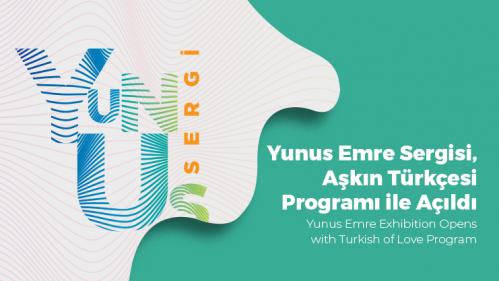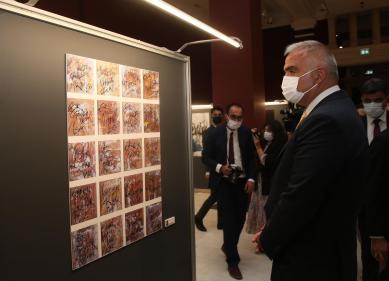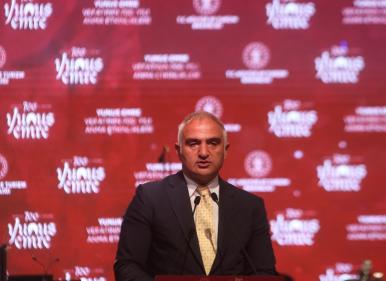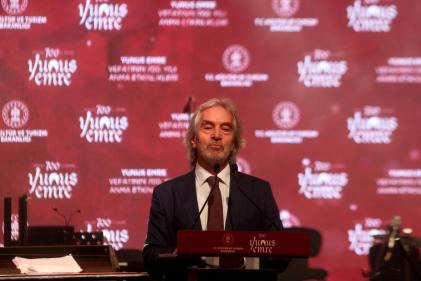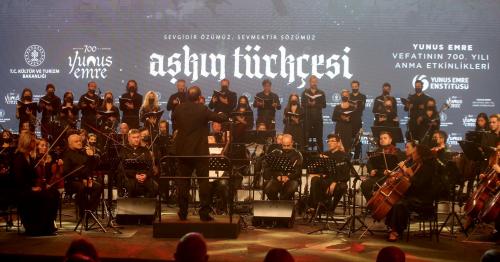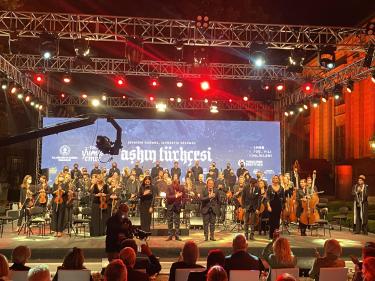Yunus Emre Exhibition Opens with "Turkish of Love" Program
A program titled "The Turkish of Love" was held at the Istanbul Archeology Museum on September 14, 2021, as part of the "700th Anniversary of Yunus Emre's Death Commemoration Events" organized in cooperation with the Turkish Ministry of Culture and Tourism and Yunus Emre Institute.
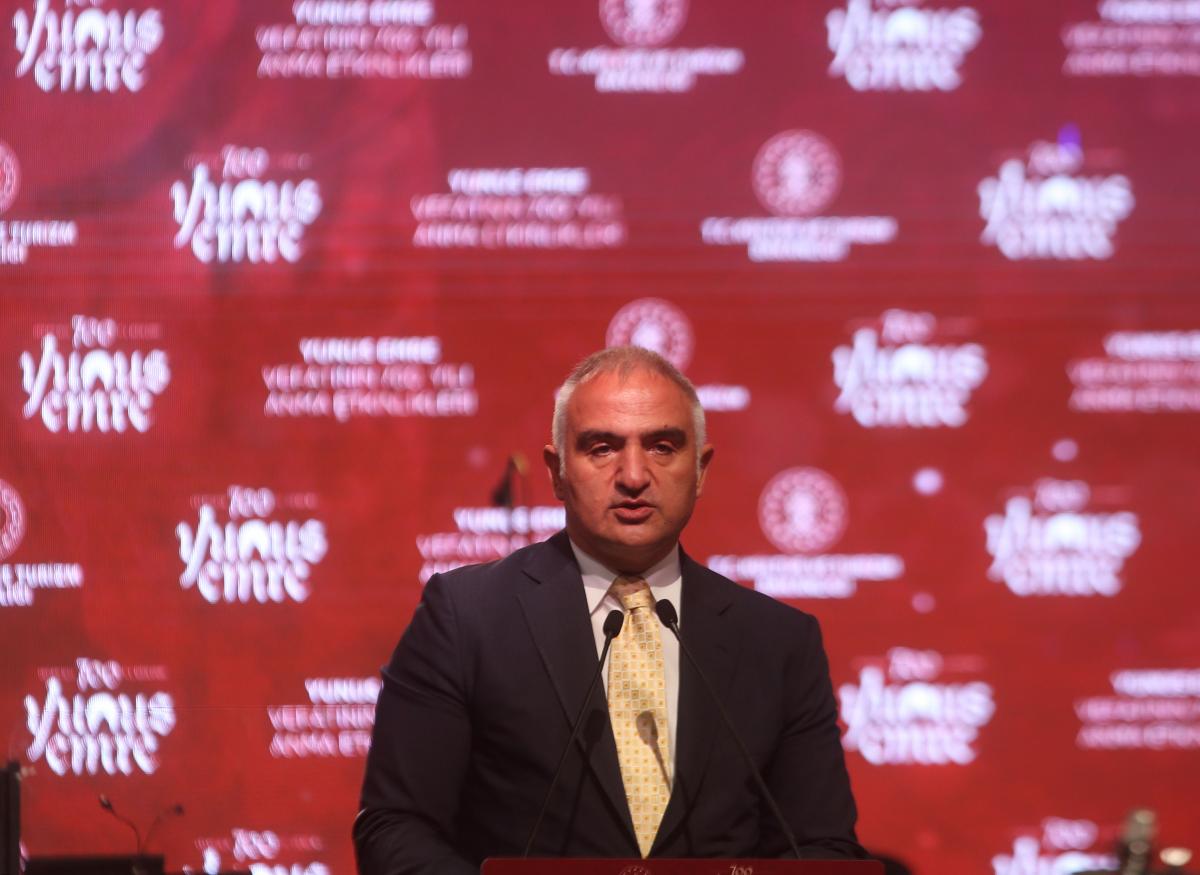
In addition to the Turkish Minister of Culture and Tourism Mehmet Nuri Ersoy and the Governor of Istanbul Ali Yerlikaya, many names from the world of culture, art, and politics attended the ceremony.
Speaking at the opening of the program hosted by Serdar Tuncer, Minister Ersoy stated that Yunus Emre commemoration programs are carried out not only at home but also abroad, and said, "Within the scope of these events, we can better understand Yunus Emre's understanding of Sufism, his world of heart, tolerance, wisdom, and poetry. We tried to get to know and promote our Yunus by organizing many programs in order to realize that he contributed to our language, culture, and world of thought. We made an effort to convey Yunus Emre's message and his universal tolerance to all humanity."
YUNUS' MESSAGE ECHOES IN ALL CORNERS OF THE WORLD
Ersoy thanked those who contributed to the "Yunus Emre Calligraphy and Typography" exhibition, which was prepared by Anadolu University and Yunus Emre Institute and opened at the Istanbul Archeology Museum within the scope of the events. Ersoy said, "I congratulate our Yunus Emre Institute and Anadolu University for their cooperation, who adopted Yunus Emre's 'Come and Let's Meet' saying as their guide and implemented many important studies."
Minister Ersoy, who stated that they have translated many of Yunus Emre's works into foreign languages, continued by saying:
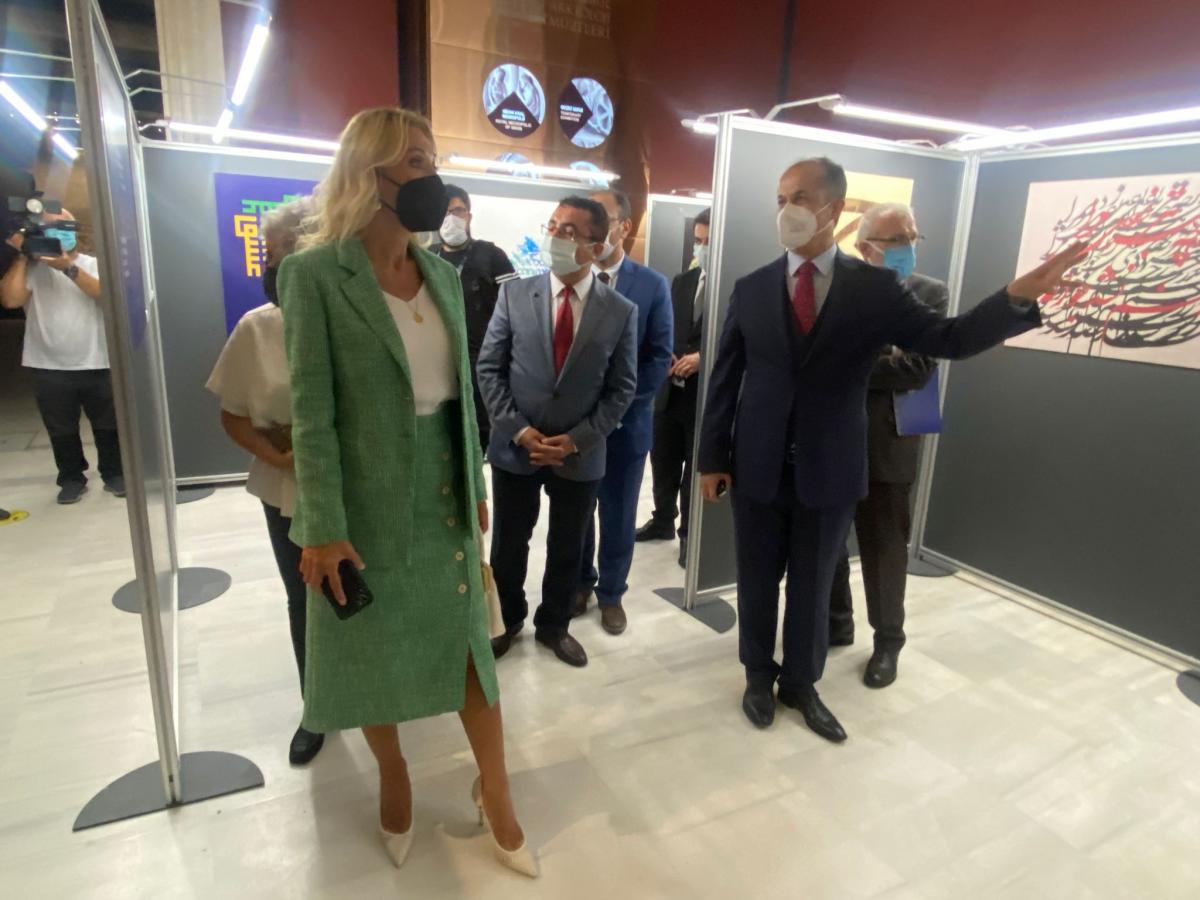
"We have held short film and painting competitions. We organized symposiums, concerts, exhibitions and composed poems. We have ensured that the square where the Turkish House is located in Szigetvar, Hungary, will be named after Yunus Emre. We have organized and continued to carry out organizations in Korea, Kazakhstan, Mexico, Malaysia, Japan, the Balkans, Spain, America, Great Britain, Hungary, Argentina, and many other countries of the world. We have created a 'Yunus Emre Memorial Forest' in China and South Africa."
Mehmet Nuri Ersoy, pointing out that they closely monitor and evaluate the activities related to Yunus Emre abroad, noted the following:
"I must say unequivocally that the message of Yunus echoes in all corners of the world. It is with great pleasure that we see people starting to research Yunus Emre after the programs held abroad. Because, as we all know, humanity is going through a difficult time today. Conflicts around the world do not promise anything to humanity. Wars are not considered a hope for humanity, people cannot look confidently to the future. In the midst of all this pain and tears, conscientious people are longing for a good idea, a good word to get out of the chaos that is happening around the world. People who are falling into a great spiritual vacuum in pursuit of material need resources to nourish their souls. For this reason, those who are aware of Yunus' tolerance show great interest in his universal message that prioritizes tolerance, generosity, kindness, and patience, wanting to get to know him better.
I want to express that we have a great responsibility in this regard. We have to work harder, introduce Yunus, Rumi, Haji Bektash Veli and tell the world the language of these values. There is no place for cruelty and evil in this language that the world needs. This language says 'We do not hold grudges against anyone.’ Yunus' language has love and brotherhood. In line with this understanding, we will continue our work both at home and abroad. Our artists, academics, and media have great duties in conveying this universal message to the world. We are always ready to do our part in this matter. We must not forget that the work we will carry out from this point of view will also add strength to our country in the name of cultural diplomacy."
Pointing out that the world-class competition is not only in the political and economic field but also in the cultural field, Ersoy said, "We know that our country, which has a deep-rooted cultural treasure, has a lot to do in this field. We also believe that we should contribute to world culture by developing various projects to reflect the cultural richness and diversity that we have. Therefore, we will continue to strengthen the spirit roots of our young people in order to move more confidently into the future. For this purpose, we are increasing the capacity of our work more and more every day. We are working in such a way that there is not a single obstacle in the way of kneading the Turkish youth in culture and art. No matter where in our country, we never accept an excuse for a young person to stay away from poetry, music, cinema, theater, and contemporary arts. We are building an infrastructure that will allow every Turkish teenager to express himself and reach an artistic organization that he will develop in the fastest and easiest way. In doing so, we care that our young people never break away from their cultural roots, they always know the values that exist for us. Without understanding Yunus, Rumi, Haji Bektash Veli and our values such as Neşet Ertaş, we cannot understand these lands properly or build a world of meaning. Our nation, which has gifted such great values to humanity, which the whole world follows with interest and attaches importance to, will have the same cultural and artistic richness if it puts these values at the center of its life."
"YUNUS, MANA OLARAK ANADOLU’YU YENİDEN MAYALAMIŞTIR”
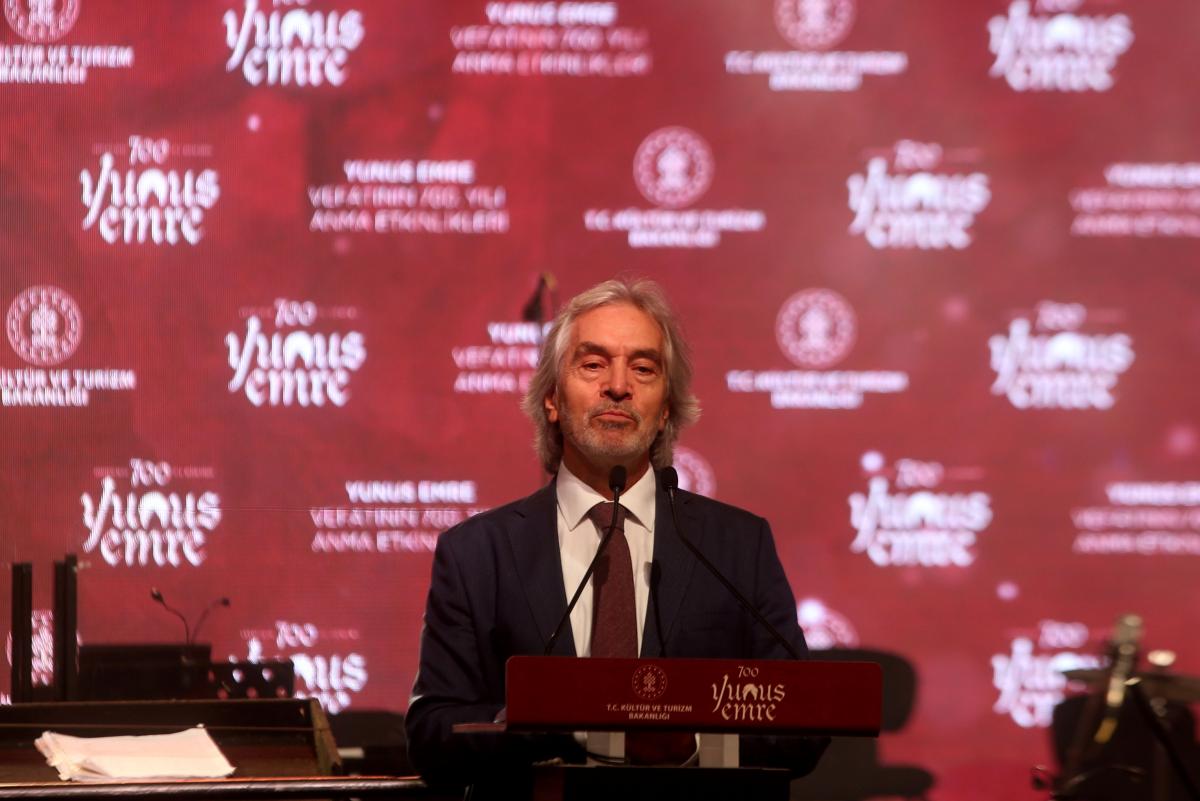
"YUNUS REDEFINED THE MEANING IN ANATOLIA"
The Deputy Chairman of the Presidential Culture and Art Policies Board, author İskender Pala, referring to the impact of Yunus Emre's words, said, "Yunus is a man who surrounds us not only with Turkish, but also with his spiritual world, the world of thought and understanding. He emerged in the 13th century, which was a century that the balance of matter and meaning has changed in favor of each other. On the one hand, the violence and terror that increased with the Crusades, as well as famine and drought, on the other hand, the drifting in the Anatolian geography... In the midst of all this, he lived as the sultan of hearts who would make people happy when people could not find bread or food. He redefined the meaning in Anatolia in an age when materialism hit the bottom."
In addition, a stage show about Yunus Emre was presented to the audience in cooperation with the General Directorate of Fine Arts, the State Opera and Ballet and the State Theaters.
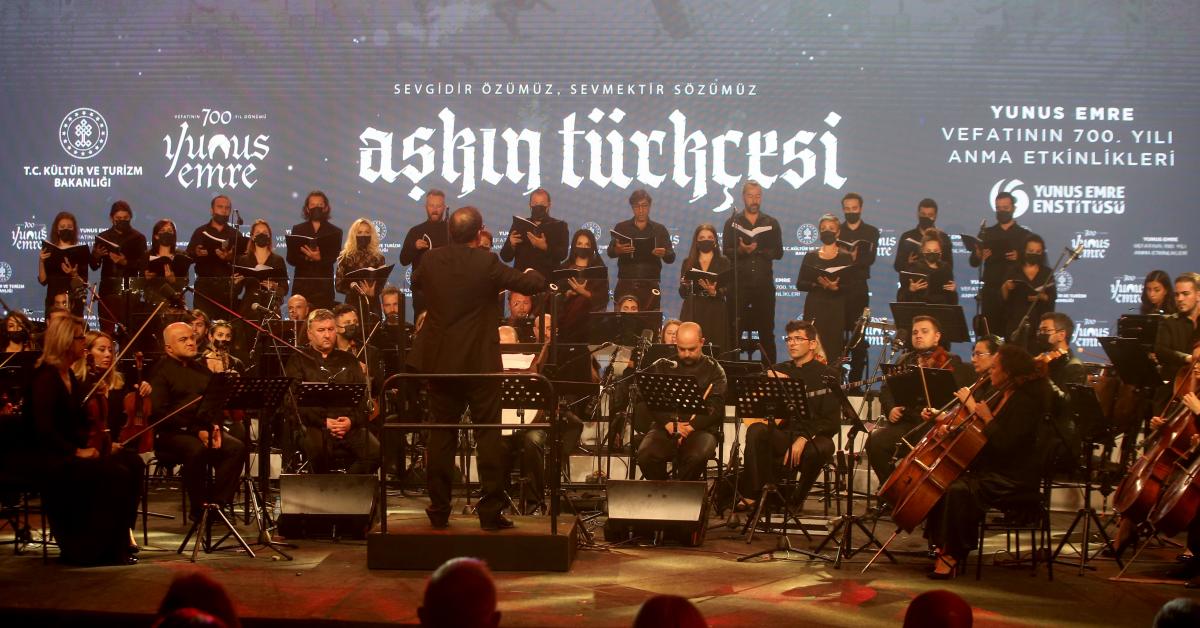
In addition to hymns recited at different themes, tracks from Adnan Saygun's "Yunus Emre Oratorio" were performed at the show.
YUNUS EMRE CALLIGRAPHY AND TYPOGRAPHY EXHIBITION
Yunus Emre Calligraphy and Typography Exhibition organized by Yunus Emre Institute in cooperation with Eskişehir Anadolu University included works reflecting the theme of Yunus Emre. In the exhibition, a very special selection of works made in the International Yunus Emre Calligraphy and Typography events that have been organized by the Graphics Department of the Faculty of Fine Arts of Eskişehir Anadolu University for 12 years met with the visitors.
Working at Anadolu University's Faculty of Fine Arts, Department of Graphics, Dr. Faculty Member Mehtap Uygungöz spoke about Yunus Emre Calligraphy and Typography Exhibition. Speaking about the idea of the organization of the exhibition, Dr. Uygungöz spoke about the 12year formation adventure of the Yunus Emre collection, some of whose works are included in the exhibition.
Can you tell us about the idea of the exhibition in general? What kind of works does the exhibition consist of?
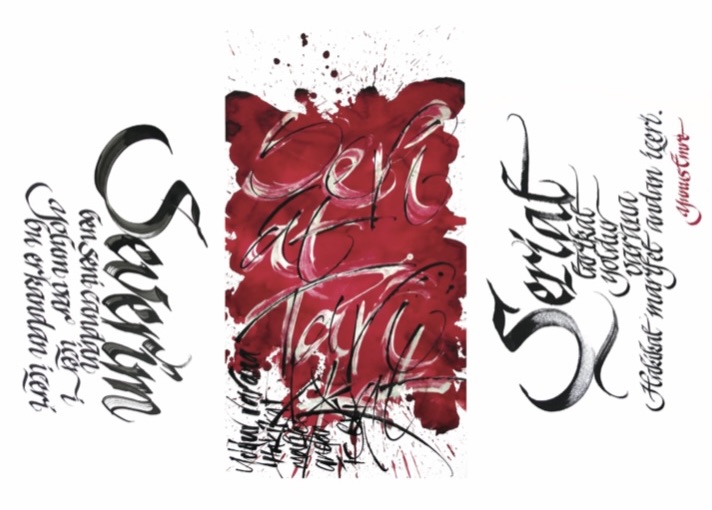
This year is the Yunus Emre and the Turkish Year, so we created this exhibition from the collection we have. The idea for the formation of this exhibition emerged when Yunus Emre Institute reached out to us. Since 2009, we, as Anadolu University Faculty of Fine Arts Graphics Department, have been opening our doors to dozens of local and foreign artists within the "Yunus Emre Calligraphy and Typography" event, and we have been doing many activities that can be appealing to these students. We both introduce our artists to the students and create environments so that our students can produce works in line with Yunus Emre's philosophy. At the same time, we ensure that our students benefit from the knowledge, skills, and experience of these artists. This event, which we have been creating for 12 years, already includes Yunus Emre as a concept. In other words, all the works that we have been doing for 12 years consist of Yunus Emre's words and sentences that can reveal his philosophy. We have exhibited the works of dozens of artists and foreign guests from dozens of countries and created archives. We have 40 works in the collection included in the exhibition. Currently, the exhibition includes 36 works from this collection.
Where have these works been exhibited before?
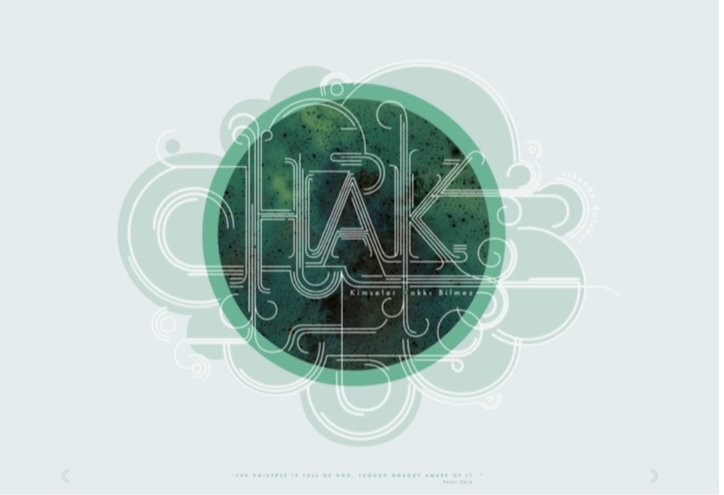
It was 2009 when we laid the seeds of such an idea as the Faculty of Fine Arts at Anadolu University in Eskişehir. For this reason, we have been exhibiting a selection we have created from the 12year archive every year since then. But at the exhibition we organize every year, we created these exhibitions with 50-60 works. Therefore, we have about 600-700 works gathered in our hands. These works were exhibited only at Anadolu University. Therefore, we are organizing an exhibition here this year. Eskişehir Anadolu University is actually the longest-running institution in the sense of commemorating Yunus Emre. Even though we never calculated the possibility that 2021 will be the Year of Yunus Emre and Turkish 12 years ago, our concept is Yunus Emre every year, since Eskişehir, where our university is located, is a city that is synonymous with Yunus Emre. Therefore, we put the words of us and Yunus Emre in letters. Our goal is to be able to explain the words and philosophy of Yunus. We said to our artists from outside, “Let's meet each other”. We both met and created works together. This year is dedicated as the Year of Yunus Emre and Turkish. It's really nice to have these works on display.
Do you process the words of Yunus in foreign languages in your works?
Of course, there are a lot of works in foreign languages that process the words of Yunus Emre. We have guests from dozens of countries. There are people from all over the world, from America to Japan, from many countries in Europe to around Iran. These artists also visually conveyed the words of Yunus in their own language. Japanese artists illustrated and visualized the words of Yunus in Japanese. In English, they also made works with the poems of Yunus. People of different nationalities produced works in their own language. As they saw the translated versions of a concept that we call Turkish culture, they started to understand the essence of Yunus Emre's poems. This is more pleasing for us because instead of trying to explain Yunus Emre and his philosophy to artists who do not speak Turkish, the artist who came is researching Yunus Emre. There are Japanese, Arabic, English, Persian, and works in many other languages in the archive.
What kind of reactions do you get for the works? Foreign artists take their works to their own countries, where they process the poems and lyrics of Yunus. Do they open exhibitions in their own countries with these works?
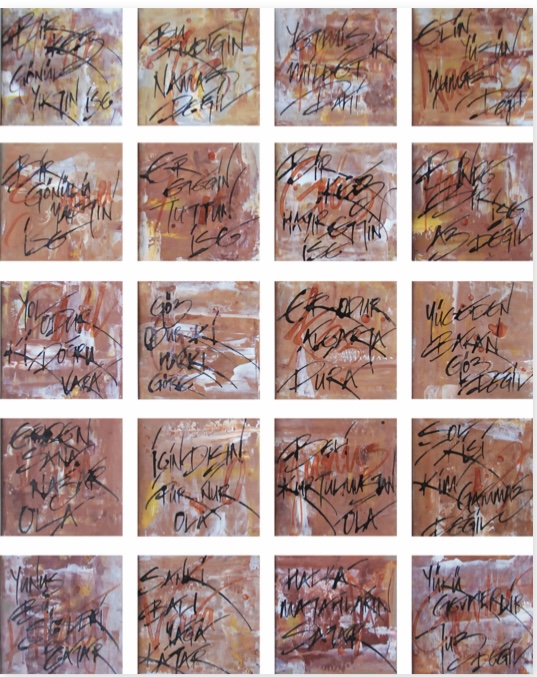
When we invite artists, we especially emphasize to the artists that our concept and the main theme is Yunus Emre. We say that they need to find something from the words of Yunus. As they did that research and uncovered the works, we actually got a better grasp of the deep meanings of the aphorisms. They share with us the words they found. "What a great person he was. It is great luck and happiness that such people have lived in your lands and that there is someone who conveys these words to you.” they say.
Therefore, I think that they probably take lessons from these for themselves. In other words, when we say to ourselves, “Let's love, and let's be loved, no one will outlive this world." it's a feeling and a motto that applies to them as well. Because he has words that do not belong only to us but have a universal feature that can affect everyone. Even though we are in these lands, we have started to understand Yunus more deeply and to decipher his philosophy with this exhibition, so we are lucky, they have the same chance.

